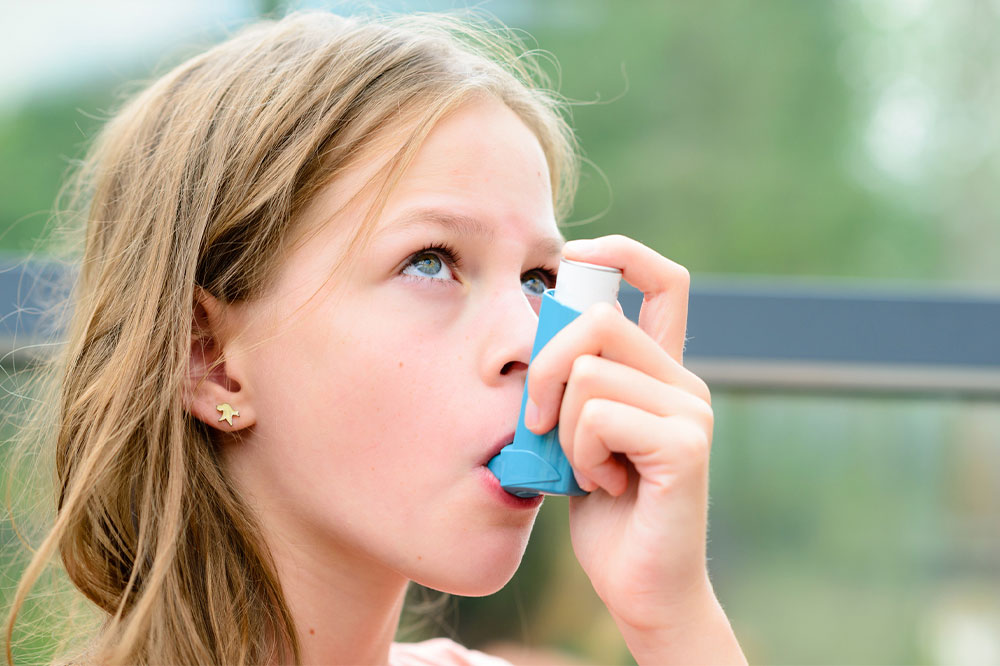
Childhood asthma – Signs, causes, diagnosis, and management
Asthma is a lung disease that causes the airways to swell and narrow, making it incredibly hard for the patient to breathe. The condition can lead to other health issues and complications if left untreated. In some cases, it can even cause children to be admitted to the hospital, requiring immediate attention. Hence, it is vital always to have a plan of action to manage asthma symptoms, especially in children.
What is childhood asthma?
Asthma, a long-term condition, can develop at any age, but it mostly starts in childhood when the child’s immune system is still developing. Usually, children with asthma start showing symptoms at the age of five.
What are the symptoms of childhood asthma?
Asthma signs may differ from one patient to another and even from episode to episode in the same child. Here are the most common asthma symptoms to look out for in children:
Frequent cough
It is one of the most widely known symptoms of asthma. Coughing spells may occur when the child is either laughing or playing. They may also occur at night or right after the child wakes up. In some cases, a cough may appear to be the only sign of the condition.
Wheezing
Due to an abnormally narrowed airway, the child may experience trouble breathing. It can lead to a high-pitched lung sound known as wheezing. This symptom may appear when the child breathes in or out.
Retractions
Sometimes, when the child exhales, it can cause their ribs and neck area to sink in. These are known as retractions. It indicates the child is experiencing immense trouble while breathing.
Some other symptoms of asthma that may appear in children are chest tightness, weakness, shortness of breath, low energy at play, and trouble eating.
What causes asthma in children?
While researchers do not know the exact cause of asthma yet, it has been found that the condition often arises as a child’s immune system develops. Multiple factors affect the development of a child’s lungs, making them susceptible to lung problems. These include:
Exposure to allergens
Children may be exposed to multiple allergens that can trigger an asthma attack. Popular examples are air pollution, dust, animal dander, and pollen.
Insufficient exposure to childhood illnesses
Although illnesses might affect a child’s health, it also helps them develop a more robust immune system to fight major diseases. If children are not exposed to illnesses, it invariably increases their chance of developing chronic illnesses like asthma in the future.
In addition to the above, other common asthma triggers are airway infections, irritants, stress, and exercise. Factors like family history and nasal allergies can also increase the risk in children.
How is asthma diagnosed in children?
Doctors may find it challenging to diagnose asthma in children under six, as it can have symptoms similar to other health conditions. To identify the problem, the pediatrician may enquire about the child’s family history, allergies, and whether they have other lung conditions. Furthermore, the doctor may suggest a few diagnostic tests, such as chest X-rays, blood tests, allergy skin tests, and lung function tests. These tests are easy to perform and help diagnose asthma in most cases.
How can childhood asthma be treated or managed?
Managing asthma in children often requires an action plan. The management plan should detail different ways to control the symptoms and prevent asthma attacks so children can carry out their routine activities. Furthermore, it should list the things to do if the problem worsens and the circumstances when to seek emergency care for the child.
Parents can best manage their child’s asthma by ensuring they steer clear of any triggers. Besides this, treating and managing asthma in children often involves using doctor-recommended remedies. Health experts may recommend nebulizers and inhalers to reduce inflammation and prevent the airways from narrowing. Further, they may suggest natural treatments to manage the condition, such as acupuncture, yoga, and slow breathing techniques.




